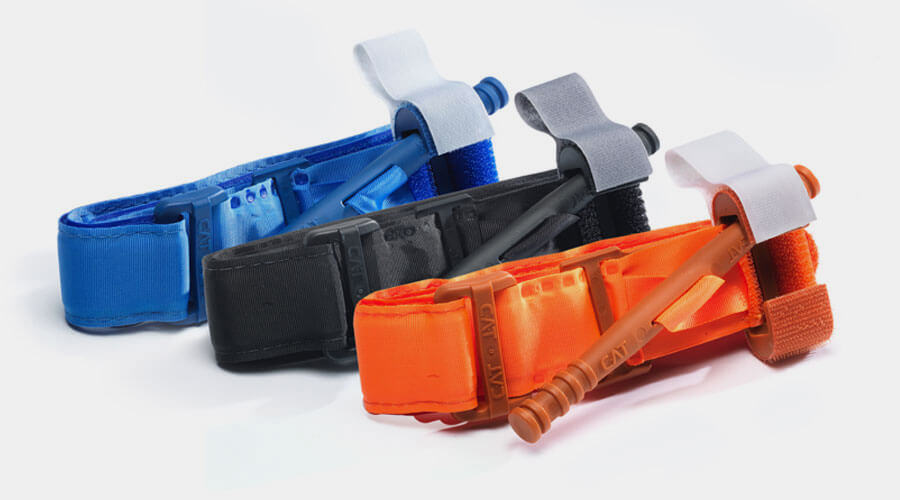Do You Know How to Use Your CAT?
May 22nd, 2019
2 minute read
A popular item in bags for bugging out or going to the range is a tourniquet, but not many people actually understand how and when to use one. It’s easy, but it’s also easy to do incorrectly – especially under stress. Let’s face it: if you need to use one of these, there’s something pretty bad happening.
For the purposes of this article, we’ll assume you’re using a CAT tourniquet, available here. They’re popular with law enforcement, EMS, and fire personnel, and they’re simple to use. In fact, they’re designed so you can apply it to yourself if you have to.
If you’re faced with a wound on an arm or leg that is bleeding profusely and won’t stop, the first thing you should reach for is NOT your tourniquet. Instead, try firm, direct pressure on the wound. If that doesn’t work, then it’s tourniquet time.
Loosen the tourniquet enough to slide it over the affected limb. You’ll want to put it above the wound, and closer to the torso. Do not put it on a joint; always put it above the joint. This means that if you have a heavily bleeding wound in the forearm, you’ll put the tourniquet above and clear of the elbow.
Once you’ve tightened the tourniquet around the limb and secured the Velcro, turn the windlass until the bleeding is controlled. Keep in mind that it might continue to bleed a little; you’re not necessarily trying to stop the bleeding completely, just control it. Secure the windlass when you’ve got the bleeding handled.
A few things to remember:
- Make sure your scene is safe. You can’t help anyone if you get hurt too.
- Use gloves to protect yourself; in fact, carry some in your bag for a situation just like this. After all, you’re going to be potentially exposing yourself to a plethora of bloodborne pathogens.
- Ensure that the wound is exposed before you try to take care of it. You can’t do anything effective until you understand what you’re dealing with. Rip or cut whatever clothing is impeding your view of the wound.
- Once you’ve applied a tourniquet, don’t put a bandage over it or cover it up with anything.
- Write “T” and the time applied on the patient’s forehead. This will alert EMS personnel that a tourniquet is in use, even if it does get covered up somehow, and/or you forget to tell them it’s there.
- Even though the CAT tourniquet is the most popular, you can also create one with a piece of clothing and a stick, etc. You can also use a rigger belt, if you wear one.
- Not everything is suitable for making a tourniquet. Thin belts, 550 cord, shoelaces, and anything else that is less than an inch wide isn’t ideal—unless you have nothing else. If you’re in that kind of a situation, then all bets are off; use what you have in front of you.
Hopefully you’ll never have to use a tourniquet at all. If you do find yourself needing one for yourself or someone else, it’s always better to know how to do it properly. Keep in mind, however, that this article isn’t a substitute for hands-on training. Take a First Aid class from your local American Red Cross or get some first responder training. Remember: you only perform as well as you train.
Join the Discussion
Featured in this article
Continue Reading
Did you enjoy this article?

 61
61







